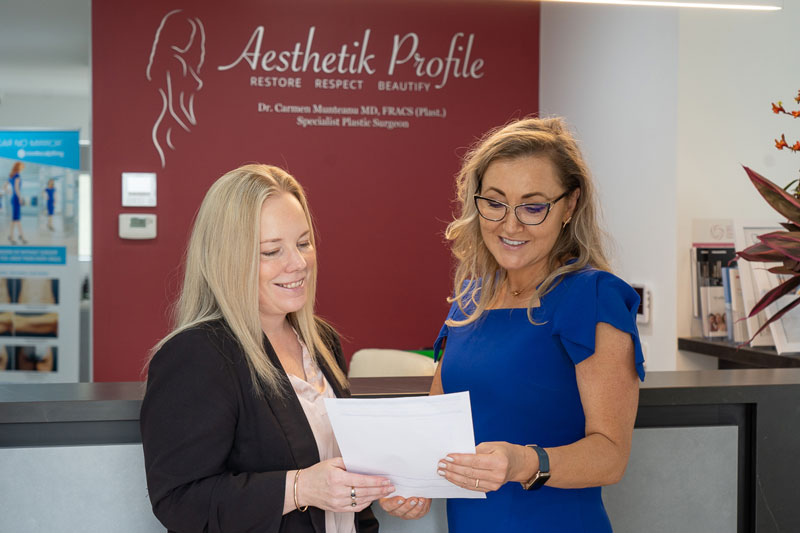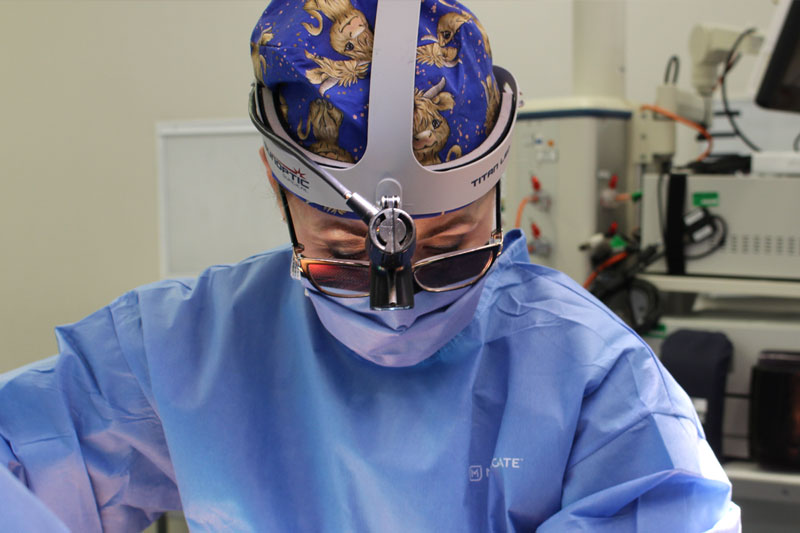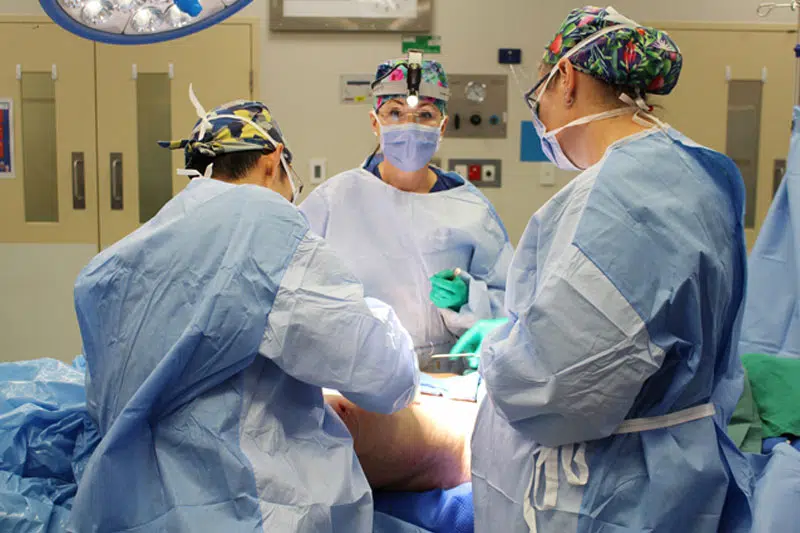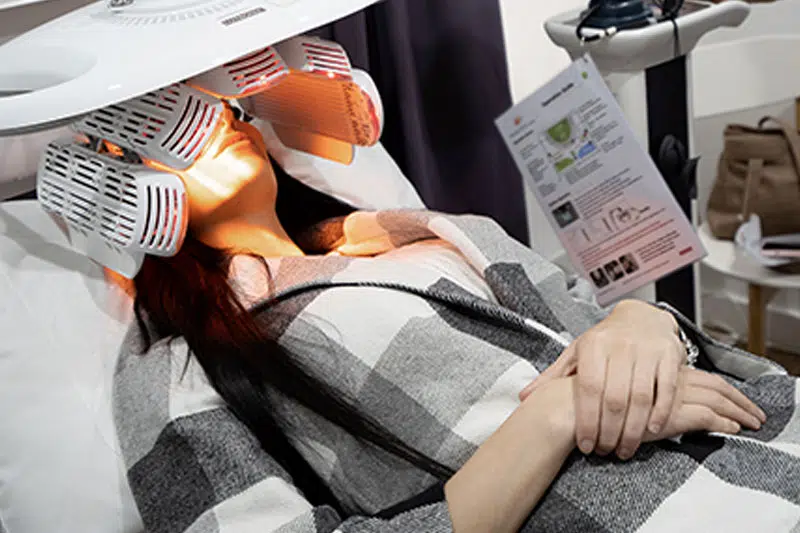How to Sleep after the Abdominoplasty Surgery
Abdominoplasty, commonly known as a tummy tuck, is a popular cosmetic surgery procedure that helps in changing the appearance of the abdomen. When it comes to abdominoplasty surgery, the recovery process is crucial for achieving optimal outcomes. One of the challenges during recovery after abdominoplasty is finding a comfortable sleeping position that does not hinder the healing process.
In this blog, we will explore effective tips for sleeping after abdominoplasty surgery, drawing on the expertise of Melbourne Specialist Plastic Surgeon Dr Carmen Munteanu.
Abdominoplasty Recovery
The recovery period following abdominoplasty is a critical time when your body heals and adjusts to the changes. It’s important to follow your surgeon’s advice closely during this period. Dr Carmen emphasises the importance of a recovery plan that is tailored to each individual’s needs and circumstances.
Take our Plastic Surgery Quiz to find out if you’d be a good candidate and if you are ready for cosmetic surgery.
The Importance of Sleep in Recovery
Sleep plays an important role in the recovery process following abdominoplasty, a fact that is strongly emphasised by specialist plastic surgeons like Dr Carmen. When you sleep, your body engages in numerous healing and repairing activities. This is the time when the body produces more cytokines, proteins that aid in fighting infection and reducing inflammation, which are essential for the healing of surgical wounds.
The stress of surgery triggers the body’s inflammatory responses. Adequate sleep helps in modulating these responses, thereby reducing unnecessary inflammation and promoting a smoother healing process. Furthermore, during the deeper stages of sleep, blood flow to muscles increases, delivering extra oxygen and nutrients that aid in healing and relieving pain.
Lack of proper sleep, on the other hand, can have detrimental effects on your recovery. It can weaken the immune system, making you more susceptible to infections. Poor sleep also affects mood and cognitive functions, which can make post-operative care more challenging. It can lead to prolonged healing times and increase the risk of complications such as delayed wound healing or even wound dehiscence (reopening of the wound).
To enhance sleep quality during recovery, it’s important to create a comfortable and restful sleeping environment.
Best Sleeping Positions after Abdominoplasty
Post-abdominoplasty, the sleeping position is not just about comfort but also about ensuring optimal healing. Dr Carmen recommends sleeping in a slightly bent position. This can be achieved by sleeping on your back with your upper body elevated at about 45 degrees and your knees bent, possibly with a pillow underneath for support.
This position is beneficial for several reasons. Firstly, it reduces tension on the abdominal incision, minimising the risk of strain on the sutures and promoting better healing. It also helps in reducing the swelling, which is a common post-operative occurrence. By elevating the upper body, you encourage fluids to move away from the site of surgery, thereby reducing inflammation and discomfort.
Additionally, this position promotes better blood circulation, which is crucial for wound healing and prevention of blood clots. Good circulation ensures that the healing tissues receive adequate oxygen and nutrients, while also helping in the removal of waste products from the body.
It’s also important to note that while this position is recommended, comfort is key. If you find this position uncomfortable after a while, it’s okay to adjust slightly, as long as you avoid putting direct pressure on the abdomen. Using specialised pillows designed for post-surgical recovery can also be a great aid in maintaining this position comfortably throughout the night.
Using Pillows for Support
The role of pillows in post-abdominoplasty recovery cannot be overstated. They are essential tools that provide support, comfort, and aid in maintaining the correct sleeping position, which is crucial for a smooth healing process.
After an abdominoplasty, your abdomen is sensitive, swollen, and prone to discomfort. Using pillows effectively can significantly reduce the strain on your abdominal area. Place a pillow under your knees to keep them slightly bent. This position alleviates pressure on the lower back and helps maintain the natural curve of your spine, reducing the risk of back pain, which is a common complaint after surgery.
Placing pillows behind your back is equally important. These pillows should support the upper body in a slightly elevated position. This elevation is important in reducing tension on the abdominal incision, as it prevents you from lying completely flat, which can put undue stress on the surgical site. The elevation also aids in reducing swelling by improving blood circulation and lymphatic drainage from the area of surgery.
The type of pillows used can also make a difference. Memory foam pillows or specially designed post-surgery pillows can provide targeted support and may be more effective than regular pillows. They conform to the shape of your body, providing support exactly where it’s needed.
Moreover, small, adjustable pillows or rolled towels can be used for additional support in areas such as under the arms or the lower back, to ensure complete comfort. The goal is to create a nest-like environment that supports the entire body in a harmonious manner, reducing the risk of shifting into an undesirable position during sleep.
Preparing Your Sleeping Area
Preparing your sleeping area in advance is a critical step in your post-abdominoplasty recovery. A well-prepared sleeping area can significantly ease your post-operative experience, ensuring that you have a comfortable, safe, and convenient space to rest and heal.
- Choose a bed that is easy to get in and out of. A bed that is too high or too low can pose challenges, especially when mobility is limited following surgery. The mattress should be supportive yet comfortable. A mattress that is too soft may not provide adequate support for your healing abdomen, while one that is too hard may cause discomfort
- Place essential items within easy reach of your bed. This includes medications, water, a phone, and any remote controls you might need. Having these items close by minimises the need to get up frequently, which can be challenging and painful in the initial days following surgery
- It’s also advisable to set up a nightstand or a small table next to your bed with all the essentials. Organise your medications and have a written schedule if needed, to keep track of your doses. Keep a bottle of water nearby to stay hydrated, which is important for your recovery. Also, ensure that your phone is within reach in case you need to contact someone or in case of an emergency
- Lighting in the room should be soft but sufficient to move around safely if you need to get up during the night. Consider installing a night light or keeping a small lamp on your nightstand. This is particularly important as your mobility and balance might be temporarily affected post-surgery
- Consider the room temperature and bedding. The area should not be too hot or too cold, as extreme temperatures can affect your comfort level. Choose bedding that is soft and non-irritating to your skin, as your surgical areas may be sensitive
A well-prepared sleeping area is essential for a comfortable and safe recovery from abdominoplasty. It should provide support, convenience, and a serene environment conducive to healing and rest. By taking these steps, you can ensure a more comfortable and stress-free recovery period.
Download Dr Carmen’s Guide to Tummy Tuck Surgery – Abdominoplasty
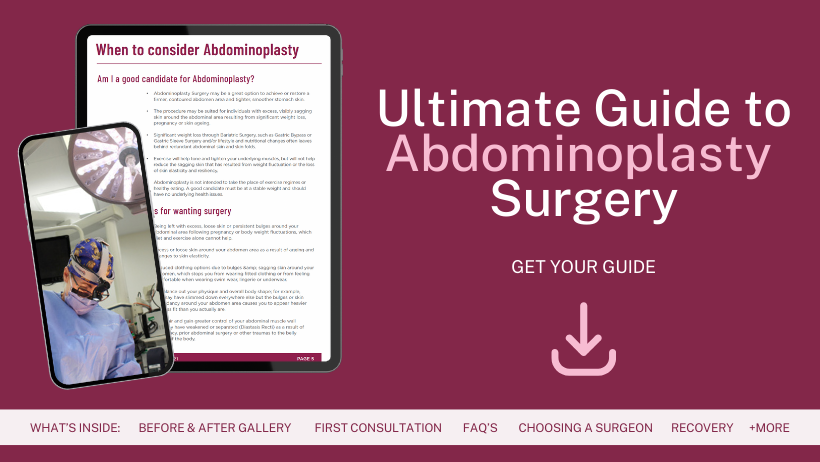
Managing Pain and Discomfort to Sleep Better after Abdominoplasty
Pain and discomfort are inevitable aspects of the recovery process following abdominoplasty, but managing them effectively is crucial for a smooth and comfortable healing journey. Post-surgery, it’s common to experience varying degrees of pain and discomfort around the incision area and the abdomen. This is a natural part of the healing process as the body responds to the surgical changes. Effective pain management begins with following Dr Carmen’s advice and guidelines, which are tailored to each patient’s specific needs and surgery details.
Over-the-counter pain relievers, such as acetaminophen or ibuprofen, can be effective for mild pain. However, it’s crucial to use these medications as directed and to be aware of their limitations and potential interactions with other medications. For more significant pain, Dr Carmen may prescribe stronger pain medications. These prescriptions are carefully chosen to balance pain relief with the need to avoid excessive sedation or other side effects.
It’s important to take medications as prescribed, even if it means waking up to maintain the medication schedule. This proactive approach can prevent pain from becoming too intense, which can make it more difficult to manage. Additionally, keeping a pain diary can be helpful. Recording when you take medication and noting the level of pain at different times can assist in adjusting pain management strategies as needed.
Non-pharmacological methods can also complement pain medications. Techniques such as deep breathing, gentle movements within the limits of post-surgery instructions, and relaxation exercises can help in managing discomfort. Ensuring a comfortable sleeping environment, as previously discussed, also plays a significant role in pain reduction.
The Role of Compression Garments
Compression garments are a staple in the post-operative care of abdominoplasty patients, and Dr Carmen often recommends their use during the recovery period. These garments are not just for physical support; they also play a significant role in managing pain and discomfort, reducing swelling, and facilitating a more comfortable sleeping experience.
Compression garments are designed to provide consistent, gentle pressure on the abdomen. This pressure supports the healing tissues and helps keep the surgical area stable, which can significantly reduce pain and discomfort, especially when moving or changing positions. The support also minimises the risk of seroma formation (accumulation of fluid) and aids in the body’s natural process of reducing swelling.
The reduction of swelling is particularly important in the early stages of recovery. Swelling can cause discomfort and tightness, which can be alleviated by the consistent use of a compression garment. By controlling swelling, these garments also contribute to a more uniform and aesthetically pleasing healing process.
When selecting a compression garment, it’s important to choose one that fits properly. It should be snug but not overly tight, as excessive pressure can be counterproductive and uncomfortable. Dr Carmen or a trained staff member can assist in selecting the right garment and instructing on how to wear it correctly.
It’s also important to wear the garment as directed. While it may be tempting to remove it for comfort, consistent use, especially during the first few weeks post-surgery, is crucial for optimal results. Some patients may need to wear it for several weeks or even months, depending on their specific case and Dr Carmen’s recommendations.
FAQs about Abdominoplasty Recovery

How long do you need to rest after a tummy tuck – abdominoplasty?
- The recommended duration for rest after a tummy tuck – abdominoplasty varies depending on the individual’s healing process and the extent of the surgery. Generally, patients are advised to take it easy for at least two weeks post-surgery. During this period, strenuous activities and heavy lifting should be avoided to ensure proper healing. Most people can return to work and light activities within 2-4 weeks, but it’s important to follow Dr Carmen’s specific advice. Full recovery, including the ability to engage in high-impact activities, typically takes around 6-8 weeks.
What day is the hardest after tummy tuck – abdominoplasty?
- The most challenging period after a tummy tuck – abdominoplasty is usually the first few days post-surgery, with the second or third day often being the hardest. During these initial days, patients experience the peak of their discomfort and swelling. Pain management is crucial during this time, and it’s important to follow your surgeon’s instructions for medication and care. The body is adjusting to the changes and beginning the healing process, so it’s normal to feel more discomfort and fatigue. It’s essential to have support during this period for assistance with daily activities and to ensure a smooth recovery.
Can you walk 3 days after tummy tuck – abdominoplasty?
- Yes, walking is generally encouraged as soon as possible after a tummy tuck – abdominoplasty, often starting within a day or two post-surgery. By the third day, most patients are advised to take short, gentle walks several times a day. Walking helps to promote blood circulation, which is crucial for preventing blood clots and facilitating the healing process. However, it’s important to walk slowly and avoid overexertion. Your mobility may be limited, and you should expect to walk in a slightly bent position to avoid straining the surgical area.
How long does it take for your stomach to look normal after a tummy tuck – abdominoplasty?
- The time it takes for your stomach to look ‘normal’ after a tummy tuck – abdominoplasty can vary. Initial swelling and changes in the appearance of the abdomen are common in the first few weeks. Most of the swelling usually subsides within the first few months, but it can take up to a year for the final results to fully settle and for your stomach to achieve its new appearance. It’s important to remember that healing is a gradual process, and patience is key. Factors like following post-operative instructions, maintaining a healthy lifestyle, and attending follow-up appointments with your surgeon can influence the final outcome.
Can I sleep on my side 2 weeks after tummy tuck – abdominoplasty?
- Two weeks after a tummy tuck – abdominoplasty, some patients may feel comfortable enough to start sleeping on their side, but this can vary greatly depending on individual healing and comfort levels. It’s important to listen to your body and not force a position that causes discomfort or strain on the surgical area. If you choose to try sleeping on your side, consider using pillows for additional support to maintain a gentle, non-straining position.
Further Reading about Abdominoplasty Surgery with Dr Carmen
- Read Dr Carmen’s Blog about When Can I Exercise after Abdominoplasty Surgery
- Read Dr Carmen’s Blog about Medicare for Diastasis Recti Repair Abdominoplasty
- See Dr Carmen’s Tummy Tuck- Abdominoplasty Before and After Photos
- Read Dr Carmen’s Blog about Preparing for Abdominoplasty Surgery
- Read Dr Carmen’s Blog about Diastasis Recti Surgery: Repairing Separated Abdominal Muscles
- Read Dr Carmen’s Blog about Recovery after Tummy Tuck – Tips, Timeline and FAQs after Abdominoplasty
- Read Dr Carmen’s Blog about When Can I Plank after Abdominoplasty – Tummy Tuck Surgery
Read Dr Carmen’s Blog about How Can I Reduce Swelling and Bruising after Abdominoplasty Surgery


